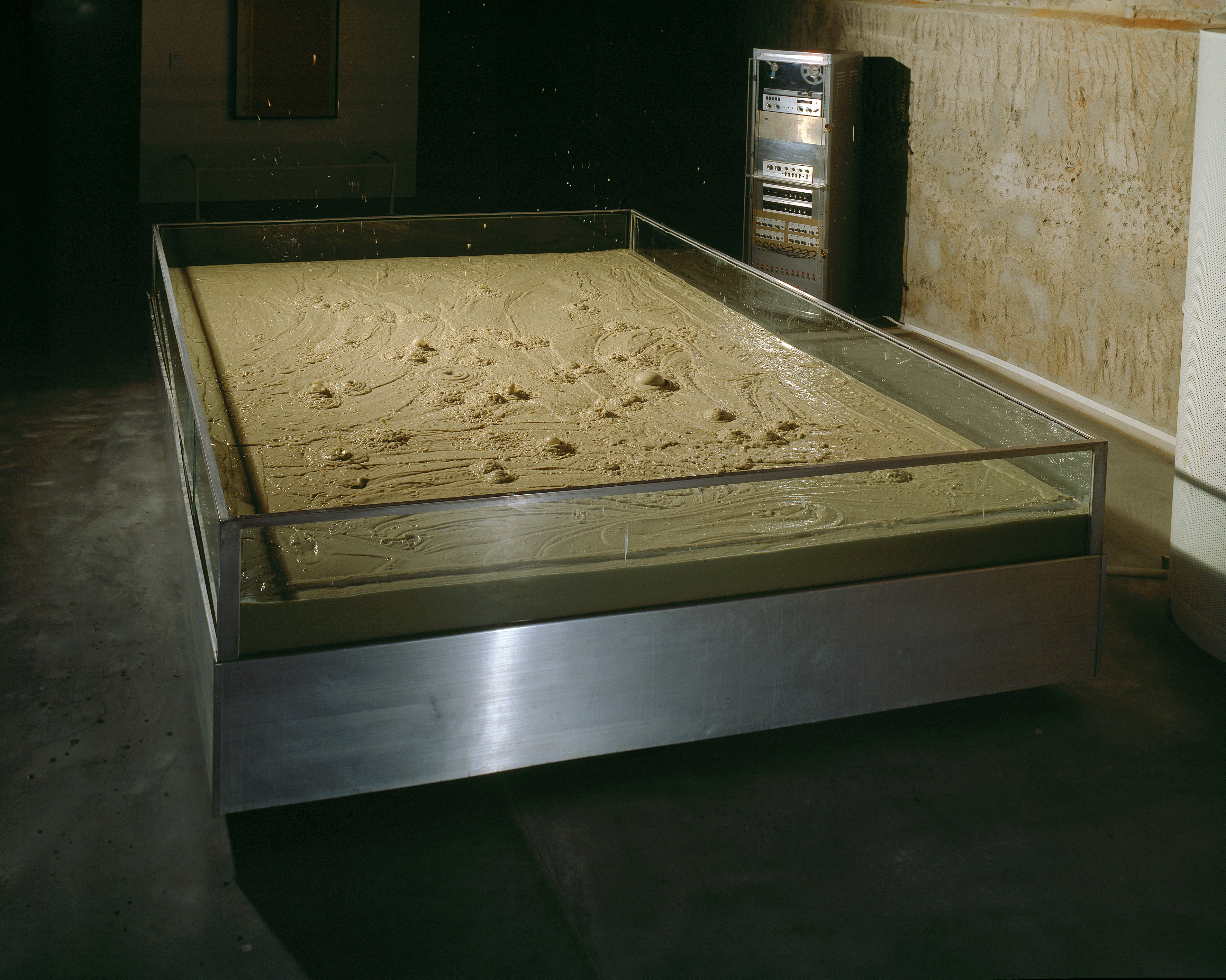J. A. Baker: The Peregrine (New York: Harper & Row, 1967). I am grateful to Nick Axel for the “How to Use a Mud Muse” part of this essay’s title. Parts and earlier versions of this essay have previously been presented at the Zooetics+ Symposium, MIT Program in Art, Culture and Technology, April 28, 2018; at Nomeda and Gediminas Urbonas’s Swamp School, at the Lithuanian Pavilion of the 2018 Venice Architecture Biennial on June 26, 2018; and on November 2-4 at the Museum in Transition, the 2018 CIMAM conference at Moderna Museet and Bonniers Konsthall.
“Unsounds” is Steve Goodman’s term for sonic matter that is “suspect, unsavoury, or ignores rules and norms.” See Steve Goodman, Sonic Warfare: Sound, Affect, and the Ecology of Fear (Cambridge: MIT Press, 2010), 9.
Adam Greenfield, Radical Technologies. The Design of Everyday Life (London: Verso, 2018), 6.
Rosi Braidotti credits Jose van Dijck for the term “life mining.” See Rosi Braidotti, The Posthuman, (Cambridge: Polity Press, 2013), 62.
Ibid., 68.
The mixing up of nature and culture are of course stakes in current discussions about the terms and realities of the—anthropocene, capitalocene—climate crisis. Edoardo Viveiros de Castro and Déborah Danowski make the point about our inability to distinguish between anthropological and cosmological orders the way one did in the modern era in their Ha mundo por vir? Ensaio sobre os medos e os fins (Florianópolis: Editora Cultura e Barbárie, 2014).
Maurice Tuchman, ed., A Report on the Art & Technology Program of the Los Angeles County Museum of Art, 1967-1971 (Los Angeles: County Museum of Art, 1971), 9. Tuchman curated the Program in collaboration with Jane Livingston. Tuchman’s rhetoric echoes that of the E.A.T., of which Rauschenberg was a founding partner; an initiative that was seen by its founders as representing an “organic social revolution.” From Matthew Wisnioski, Engineers for Change: Competing Visions of Technology in 1960s America (Cambridge: MIT Press, 2012), 143.
In the US, the critical reception of the A&T “corporate art” project was in many cases no less hostile. See Kim West, The Exhibitionary Complex. Exhibition, Apparatus, and Media from Kulturhuset to the Centre Pompidou, 1963-1977, PhD dissertation, Södertörn University, 2017, 240. For a brief summary of his own and Max Kozloff’s Artforum International reviews of A&T, see Jack Burnham, “Art and Technology: The Panacea That Failed,” originally published in Kathleen Woodward ed., The Myths of Information: Technology and Post-Industrial Culture (Madison: Coda Press, 1980), ➝.
Tuchman, 285. All of the artists of the Art and Technology Program except two—Channa Davis and Aleksandra Kasuba—were male, and the lineup was a mix of European and American artists in a disparate mix of stellar names, including Max Bill, Öyvind Fahlström, Karlheinz Stockhausen, Jean Dubuffet, Michael Asher, and Andy Warhol.
Tuchman, 285, 286, 282.
Shannon Mattern: Code and Clay, Data and Dirt. Five Thousand Years of Urban Media (Minneapolis: University of Minnesota Press, 2017), xxix, 88, 113. To Rauschenberg, Mud Muse built associatively on naturally occurring sludge fountains at Yellowstone National Park: so-called “paint pots” in which rising gases and thermal heat drive strongly colored mud out of the earth. Within his own production, he relates Mud Muse to the ¨earth paintings¨ from the 1950s. But the aesthetic and perceptual transvaluations performed by the work go beyond media specificity. We can allow Mud Muse to depart for a post-medial and interdisciplinary hermeneutic framework via Leo Steinberg’s concept of the flatbed picture plane, with which he proposed to characterize the picture plane of 1960s painting. Steinberg borrowed the term from the flatbed printing press that again evokes flatbed scanners and embedded technologies at our end of history.
Ross Ashby, An Introduction to Cybernetics (London: Chapman and Hall, 1957), 2.
See Andrew Pickering, “Cybernetics in Action” and my own “All Systems Flow. Fiction and play on the cybernetic plane of history,” in The Two-Sided Lake (Liverpool: Liverpool University Press, 2016). See also Andrew Pickering, The Cybernetic Brain: Sketches of Another Future (Chicago and London:Chicago University Press, 2010).
N. Katherine Hayles: How We Became Pothuman: Virtual Bodies in Cybernetics, Literature and Informatics (Chicago and London: Chicago University Press, 1999), 26.
Today, cybernetics is a defunct branch of research. It is no longer to be found in the US government’s lexicon of research topics that can receive federal funding, and the American Society for Cybernetics has only a few dozen members. This might seem strange given the genealogical relation between Cybernetics and the development of personal computing and the Internet. The more that reality is mediated by the internet, on the other hand, the clearer it becomes that there are aspects of cybernetics that have no direct bearing on today’s near-inescapable digitality. Hence it is a partial truth that cybernetics is pre-internet; from another perspective than the corporate sublime of digital networks, the heirs to Cybernetics’ speculative ethos are more playful and irritable phenomena in art and computational cultures that are typically at odds with existing cartographies of power.
Beth Dempster: “Sympoietic and Autopoietic Systems: A New Distinction for Self-organizing Systems,” paper presented at the 44th Annual Meeting of the International Society for the Systems Sciences, ➝.
Humberto Maturana and Francisco Varela, Autopoiesis and Cognition: The Realization of the Living (Dordrecht: Springer, 1973).
Donna J. Haraway, Staying with the Trouble: Making Kin in the Chthulucene (Durham: Duke University Press, 2016), 58–98.
Lynn Margulis, Symbiotic Planet. A New Look at Evolution (Amherst: Basic Books, 1998), 21.
Scott Gilbert lecture at the Zooetics+ Symposium, MIT Program in Art, Culture and Technology, April 28, 2018.
Caroline Jones: “Sensing Symbiontics, or, Being with Archaeo-Bacteria,” unpublished manuscript for the Concordia University Hexagram lecture, May 3, 2018, 9.
Ibid., 10.
